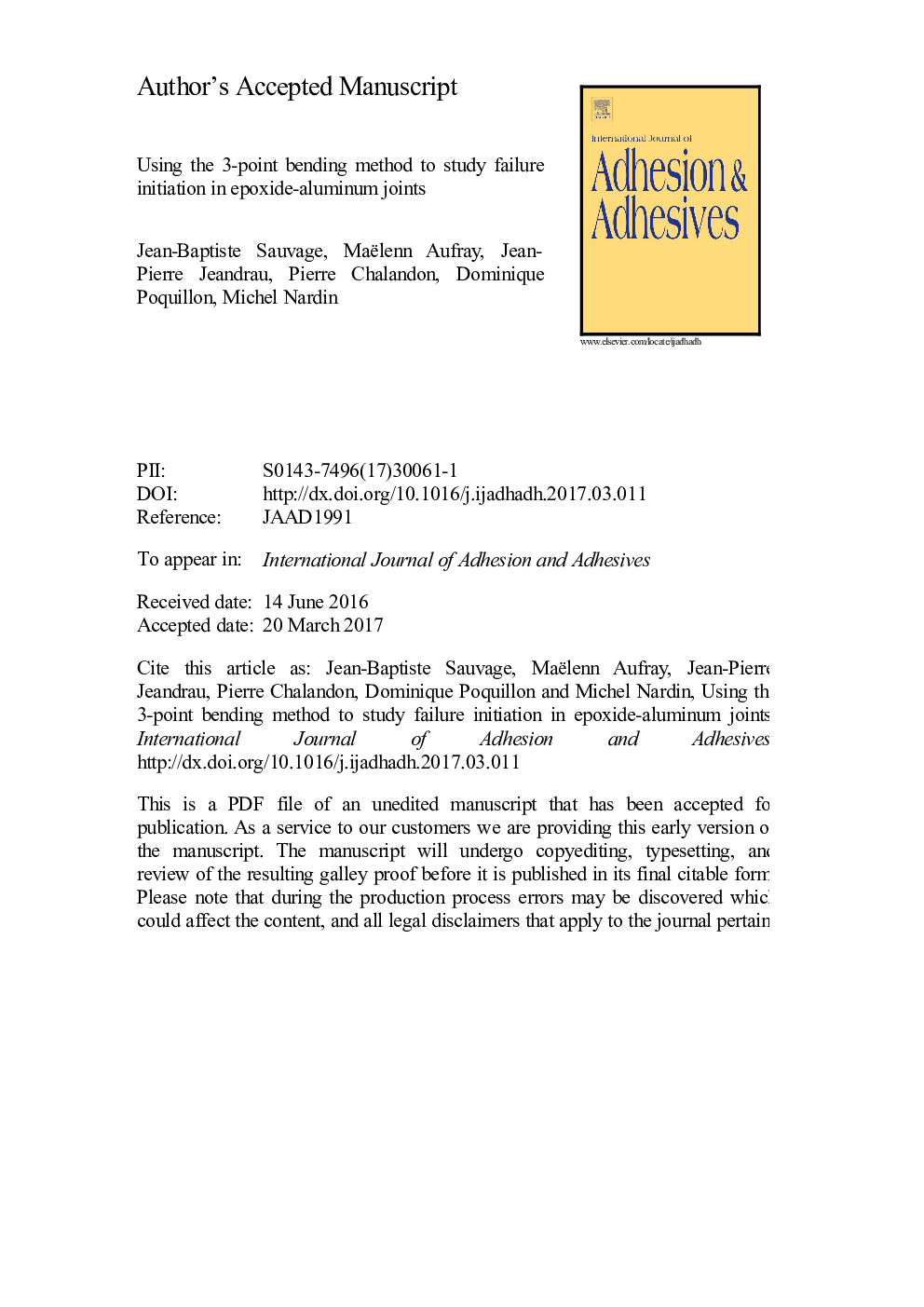| کد مقاله | کد نشریه | سال انتشار | مقاله انگلیسی | نسخه تمام متن |
|---|---|---|---|---|
| 5014830 | 1463462 | 2017 | 37 صفحه PDF | دانلود رایگان |
عنوان انگلیسی مقاله ISI
Using the 3-point bending method to study failure initiation in epoxide-aluminum joints
ترجمه فارسی عنوان
با استفاده از روش خمشی 3 نقطه جهت مطالعه شکست در اتصالات اپوکسی-آلومینیوم مطالعه شده است
دانلود مقاله + سفارش ترجمه
دانلود مقاله ISI انگلیسی
رایگان برای ایرانیان
کلمات کلیدی
موضوعات مرتبط
مهندسی و علوم پایه
سایر رشته های مهندسی
مهندسی مکانیک
چکیده انگلیسی
The increasing use of adhesives in industry has boosted the search for tests which allow the adherence level to be defined. These tests, depending on the type of load, examine different stresses, failure modes and mixed modes. Furthermore, these tests can be focused either on initiation or propagation of adhesive failure. The subject of this study is the initiation of adhesive failure. The initiation of failure can be determined with the 3-point bending test. Trials of 3-point bending tests were conducted on an aluminum 2024 substrate, with two different thicknesses, in order to understand the impact of the adherend thickness. The aluminum substrate received different types of surface pre-treatment: acetone cleaning, hydrochloric acid etching or aminopropyltriethoxysilane coating. Two adhesives were used: the first one was a mixture of epoxy pre-polymer DGEBA and DETA amine, whereas the second was a commercially formulated adhesive, ELECOLIT 6604. The initiation of adhesive failure was obtained by 3-point bending test and verified with SEM analysis. The failure loads measured enabled the effect of surface treatment on adhesive failure to be revealed: the results indicate that the surface treatment with silane is the most efficient in comparison to hydrochloric acid etching and of course to the simple acetone degreasing. It was assumed that the scatter of the results obtained for each series is due to the variation of the “intrinsic” adherence between the adhesive and the substrate. Furthermore, it was noted that the failure loads for different substrate thicknesses cannot be compared due to the effect of the thickness: it was therefore not possible to simply compare results obtained for different thicknesses of the same substrate for a given substrate-adhesive system. The energy approach proposed in this study makes it possible. The energy requested to initiate the adhesive failure for a given system can then be known, whatever the initial geometry of the 3-point bending test is. However, it was also shown that the thickness of the substrate must be correctly chosen. A thick substrate increases the dispersion and a thin substrate may induce local unwelcome plastic strain. In conclusion, this study allows to define an energy criteria for adhesives failure initiation.
ناشر
Database: Elsevier - ScienceDirect (ساینس دایرکت)
Journal: International Journal of Adhesion and Adhesives - Volume 75, June 2017, Pages 181-189
Journal: International Journal of Adhesion and Adhesives - Volume 75, June 2017, Pages 181-189
نویسندگان
Jean-Baptiste Sauvage, Maëlenn Aufray, Jean-Pierre Jeandrau, Pierre Chalandon, Dominique Poquillon, Michel Nardin,
